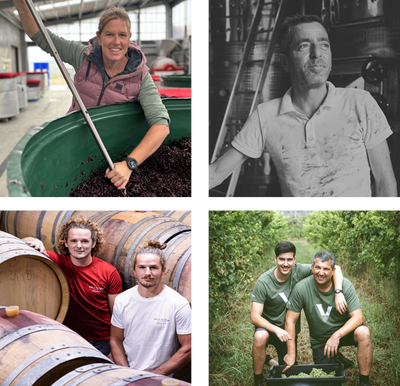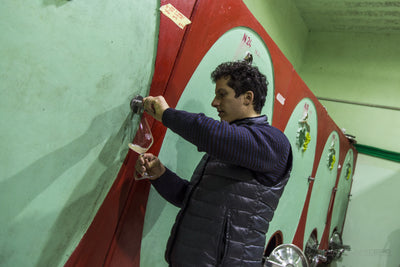Turbiana: A white grape indigenous to the region of Lugana, Italy. For years, it was confused with Trebbiano, as it was known as Trebbiano di Lugana, and was fairly recently shown to be almost genetically identical to Verdicchio. Closely related they may indeed be, but they are still genetically different! A highly versatile grape, with bright acidity, soft tropical and citrus flavour and distinctive mineral tang, as well as moderate alcohol levels and balanced salinity. And gosh do they age well too - in youth, there's a gently bitter green almond that becomes richer with time in bottle - almost hazelnut-like, with the merest hint of oxidation. Check out the wines of Cascina Maddalena to try Turbiana for yourself!
Fernao Pires: Also known as Maria Gomes, Fernao Pires is an aromatic white grape grown throughout Portugal, best suited to hot, dry climates. No wonder it does so well in South Africa's hot and dry Swartland! Pieter Walser of The BLANKbottle Winery produces one in the form of Kortpad Kaaptoe, a highly spiced, rich and aromatic wine.
Vijariego Blanco: Now here's a really fascinating one. Vijariego Blanco is an exceptionally rare grape variety, confusingly not related to Vijariego, that originates from Andalucia but is now found in the Canary Islands and Tenerife. And it's not exactly common there either! Jancis Robinson MW once compared it to Assyrtiko thanks to its ability to retain vibrant acidity even when grown in very hot climates. And our very own Alberto Orte is doing brilliant work bringing these varieties back to their home of Andalucia too, taking cuttings and planting them himself. Check out Bodegas Tameran's utlra-rare and amazing bottling here
Albilla de Manchuela: Distinct from other Albillos grown across Spain, Albilla de Manchula is a variety so rare there's almost nothing out there about it, other than that it's indigenous to this area of central Spain! We love Juan Antonio Ponce's El Reto, which translates from Spanish as 'challenge', referring to the great challenge of making a high quality white wine in such a hot area. He's nailed it!
Grolleau: Grown primarily in the Loire, the name is derived from the French word grolle, meaning "crow" reflecting the deep colour of the skins of the grapes. Most commonly used for producing Anjou rose, there are just a few examples vinified as reds. And we love Haut Baigneaux's version, almost like a cross between Syrah, Gamay and Mencia.
Mavrud: An ancient variety native to Bulgaria, known for its low yields and late ripening, the name Mavrud is derived from the Greek word “mavro”, which means black, likely due to the dark skins of the grape. Vicitulturist at Edoardo Miroglio is quite the fan of it, often comparing it to Nebbiolo. Try Miroglio's here
Mondeuse: A lovely grape, most commonly found in eastern France, and particularly in the Savoie. A typical wine produced from Mondeuse is deeply coloured but with lovely bright aromatics but light-medium bodied, and with lovely aromatics and plentiful acidity. La Combe de Grand Vigne's is just that!
Segalin: A crossing of the obscure Jurançon Noir and Portugais capable of producing well structured wines.There are just 58 recorded ha of Segalin in the world, and our own organic Cahors producer Clos d'Audhuy has a few rows of vines. As vigneron Benoit highlights "Usually, the wines from Ségalin are very black, tannic, rustic; not what I'm after... So, I had the idea of vinifying it like a rosé!" You can try it in his lovely Queue de Pressoir.
Centisimino: Originating from Emilia Romagna, Centisimino is otherwise known as Savignon Rosso, due to its Sauvignon Blanc-esque aromatics. They aren't related, but there's a certain herbaceousness that one can pick up in both varities! Only revived in the 60s from a single plot, just a handful of producers in Emilia Romagna produce wines from it. Villa Papiano's is almost Bordeaux-like, and is just the sort of wine to dip in and out of and muse over an evening, as it unfolds with time open.

